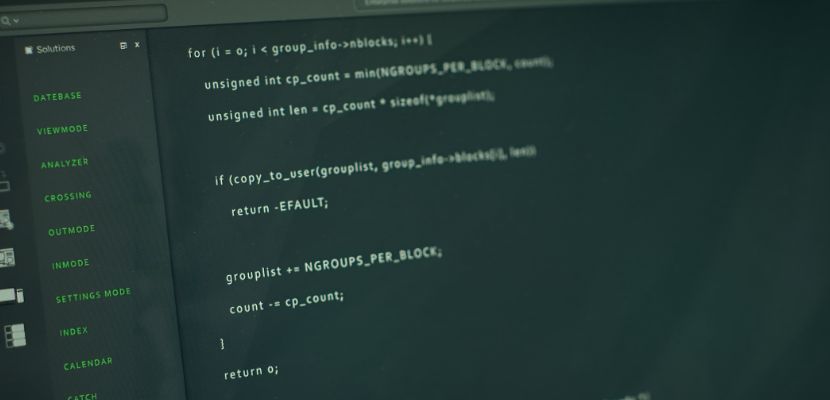Command prompt is a command-line interface (CLI) in Microsoft Windows that allows users to execute commands to perform various system tasks.

What Is Command Prompt?
Command prompt is a text-based interface in Microsoft Windows that allows users to interact with the operating system by typing commands. It provides a direct way to control system functions, perform administrative tasks, and manage files, among other operations.
Unlike graphical user interfaces (GUIs), which rely on mouse clicks and visual elements, command prompt requires users to enter specific commands and parameters to execute tasks. This tool is particularly useful for troubleshooting, automating processes through batch files, and accessing features not always available in the GUI.
Command prompt runs on the command-line interpreter, typically Command.com or cmd.exe, which interprets and executes the user input in real-time. It is an essential tool for advanced users, system administrators, and developers who need to perform tasks quickly and efficiently, especially in environments where GUI-based tools may be less effective or unavailable.
Is Command Line the Same as Python?
No, command line and Python are not the same, though they can sometimes overlap in functionality.
The command line refers to a text-based interface for interacting with an operating system, where users input commands to perform various tasks. It's a way to interact with the system itself by managing files, executing scripts, and controlling system processes. Examples of command-line interfaces include Command Prompt in Windows or Terminal in macOS and Linux.
Python, on the other hand, is a high-level programming language. It is often used for writing scripts, applications, or automation tasks. Python can be run from the command line, but the two are not synonymous. Python is used to create programs, while the command line is used to execute those programs or interact with the operating system.
What Is Command Prompt Used For?
Command prompt is used for a variety of tasks in Microsoft Windows, particularly for managing system functions and automating processes. Some common uses include:
- File management. You can create, delete, move, copy, and rename files and directories without using a graphical interface.
- System troubleshooting. Command prompt can help diagnose and fix system issues. For example, you can use commands like sfc /scannow to scan and repair system files, or ipconfig to view network settings.
- Running scripts. It allows users to execute batch files and scripts, which can automate repetitive tasks such as file backups or system maintenance.
- Network configuration. Users can configure and troubleshoot network settings using commands like ping, tracert, and ipconfig to check connectivity and diagnose network problems.
- Advanced system control. Administrators and advanced users can manage system settings, perform disk operations (like formatting or partitioning drives), and configure user accounts.
- Executing programs. Command prompt can be used to run executable programs and processes directly, without having to navigate through a GUI.
- Accessing hidden tools. Certain system utilities and functions are only accessible or most efficiently run via command prompt, such as system configuration tasks and advanced command-line tools.
Command Prompt Syntax
In general, the syntax for commands in command prompt typically follows the structure of:
command [options] [parameters]Here’s an example of command prompt syntax used for a common task, such as copying a file:
copy C:\Users\YourUsername\Documents\example.txt D:\Backup\Breakdown of this command:
- copy: The command to copy a file.
- C:\Users\YourUsername\Documents\example.txt: The path to the file you want to copy.
- D:\Backup\: The destination directory where the file will be copied.
Command Prompt Commands List
Here’s a table with some common command prompt commands, their descriptions, and usage:
| Command | Description | Usage example |
| dir | Lists the contents of a directory. | dir C:\Users\YourUsername\Documents |
| cd | Changes the current directory. | cd C:\Windows\System32 |
| copy | Copies files from one location to another. | copy C:\file.txt D:\Backup\ |
| del | Deletes one or more files. | del C:\file.txt |
| mkdir | Creates a new directory. | mkdir C:\NewFolder |
| rmdir | Removes an empty directory. | rmdir C:\OldFolder |
| rename | Renames a file or directory. | rename C:\file.txt newfile.txt |
| move | Moves a file or directory to a new location. | move C:\file.txt D:\Backup\ |
| cls | Clears the command prompt screen. | cls |
| exit | Closes the command prompt window. | exit |
| echo | Displays a message or turns command echoing on/off. | echo Hello, world! |
| ipconfig | Displays the current network configuration. | ipconfig |
| ping | Sends packets to a network address to test connectivity. | ping google.com |
| tracert | Traces the path packets take to a network host. | tracert google.com |
| tasklist | Displays a list of running processes. | tasklist |
| taskkill | Terminates a process by its process ID (PID) or name. | taskkill /im notepad.exe |
| chkdsk | Checks the disk for errors and repairs them. | chkdsk C: |
| sfc | Scans and repairs system files. | sfc /scannow |
| shutdown | Shuts down or restarts the computer. | shutdown /s /f /t 0 |
| systeminfo | Displays detailed configuration information about the system. | systeminfo |
How to Use Command Prompt?
Using command prompt involves typing specific commands into the interface to interact with the operating system. Here's a guide on how to use it:
1. Opening Command Prompt
On Windows 10 or 11:
Press Windows + R, type cmd, and press Enter.
Alternatively, you can search for "Command Prompt" in the Start menu and click on it.
For certain tasks like system maintenance, you might need elevated permissions. Right-click on command prompt and select "Run as administrator."
2. Navigating Directories
- Viewing the contents of a directory:
- Type dir and press Enter. This will list all files and folders in the current directory.
- Changing directories:
To navigate to another folder, use the cd (Change Directory) command. For example:
cd C:\Users\YourUsername\DocumentsTo move up one directory level, type:
cd..3. Running Commands
Simple commands: You can type various commands and press Enter to run them. For example, typing echo Hello will output:
HelloUsing commands with parameters: Many commands accept additional options or parameters. For example, copy can copy a file from one directory to another:
copy C:\Users\YourUsername\file.txt D:\Backup\4. Using Wildcards
Wildcards like * and ? can be used to represent multiple or single characters, respectively. For example, to copy all .txt files from one directory to another:
copy C:\*.txt D:\Backup\5. Executing Programs
To run a program, type its name (or full path) into command prompt and press Enter. For example, to launch Notepad:
notepadIf the program is located in a directory not included in the system's PATH, you need to specify its full path:
C:\Program Files\Notepad++\notepad++.exe6. Using Help
If you're unsure about a command or need more information about its syntax, you can use the help command. For example:
help copyThis will display detailed information about the copy command, including its syntax and options.
7. Exit Command Prompt
To close the Command prompt window, type:
exitOr, simply click the "X" button in the window's corner.
8. Advanced Operations
Running scripts or batch files: You can execute scripts (e.g., .bat files) directly from command prompt. For example:
C:\scripts\myscript.bat9. Administrator Commands
Some tasks require administrator privileges, such as system maintenance commands (chkdsk, sfc /scannow), so it's important to run command prompt as an administrator for these commands.
What Are the Benefits and the Limitations of Using Command Prompt?

Command prompt offers a range of benefits, such as faster execution of tasks, greater control over system operations, and the ability to automate processes. However, it also has limitations, including a steeper learning curve for beginners and less intuitive interaction compared to graphical user interfaces.
Benefits of Command Prompt
Here are the main benefits of command prompt:
- Faster execution. Command prompt allows users to execute tasks quickly by typing commands, which can be faster than navigating through graphical interfaces. For repetitive tasks, it can be especially time saving, as you can automate actions using batch files or scripts.
- Greater control. Command prompt offers fine-grained control over system settings and processes. Advanced users and administrators can perform operations that are either difficult or impossible to achieve via GUI tools, such as managing system files or processes at a low level.
- Automation capabilities. Through scripting and batch files, command prompt can automate repetitive tasks, such as backups, file management, and network configurations. This can significantly reduce human error and save time.
- Access to hidden system tools. Some system utilities and settings are only accessible through command prompt. For example, you can run diagnostic tools like sfc /scannow or check network configurations with ipconfig, which may not be easily accessible from the GUI.
- Resource efficiency. Unlike graphical interfaces, which require more system resources to run, command prompt uses minimal resources, making it an ideal choice for low-resource environments or when working on remote systems where GUIs are unavailable.
- Remote management. Command prompt allows for remote management of servers and systems through tools like SSH (via third-party utilities). This is especially useful for system administrators who need to manage remote servers without a graphical interface.
- Troubleshooting and diagnostics. Command prompt is a key tool for troubleshooting and diagnostics. You can run tests like ping, tracert, and chkdsk to identify network issues, verify connectivity, and repair disk errors directly from the command line.
Limitations of Command Prompt
While the command prompt is a powerful tool for system management and automation, it does come with several limitations. Below are some of the key drawbacks:
- Steep learning curve. The command prompt requires users to learn specific commands and their syntax, which can be intimidating for beginners. Unlike graphical interfaces, there is no visual representation, making it harder for new users to understand and operate efficiently.
- Limited functionality for advanced tasks. While command prompt is great for basic operations, more complex tasks may require additional software or a more advanced command-line tool like PowerShell. Some advanced system configurations cannot be easily accomplished through command prompt alone.
- Lack of user-friendliness. Command prompt is text-based, which can be less intuitive than GUIs. For users unfamiliar with the command syntax, it can be difficult to navigate and perform tasks without making errors.
- Error handling. Unlike GUIs, which often provide error messages in a user-friendly format, command prompt may return cryptic or vague error codes. Interpreting these errors can be time-consuming and require additional troubleshooting.
- No built-in multi-tasking. Command prompt is typically limited to executing one command at a time. While you can run multiple instances of command prompt, there is no built-in support for simultaneously running several commands in the same window without scripting.
- No graphical feedback. Unlike GUI tools, which often provide visual feedback (e.g., progress bars or notifications), command prompt offers limited feedback. This can make it harder to gauge progress, especially when performing long-running tasks.